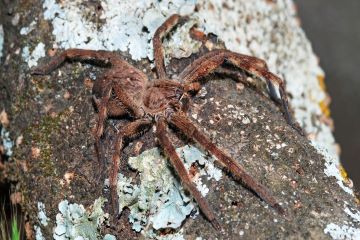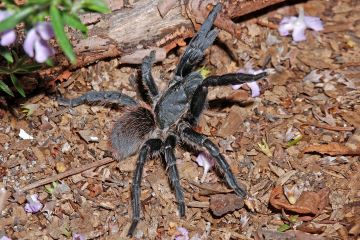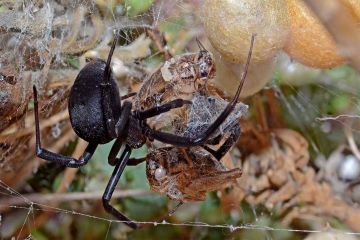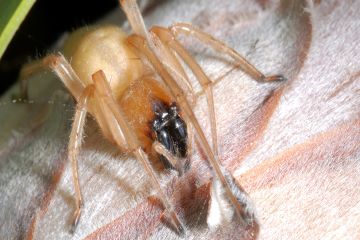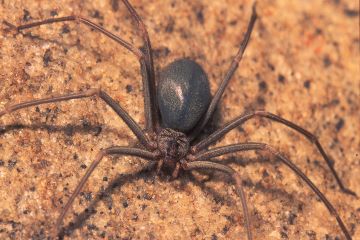Types of spiders you should look out for
Spider bites
Our province is home to a variety of spider species. Spiders play a very important role in our ecosystem; they’re responsible for controlling insect populations.
As we approach summer, you’re more likely to come across a wide range of spiders. Most spiders are not harmful, but it’s best to take precaution if you encounter one.
It’s important to remember that deaths caused by spider bites are rare, and no deaths have been recorded in southern Africa, however, if you’re bitten and unsure about the type of spider that bit you, you should seek medical assistance from a poison unit such a Tygerberg Poison Unit, 086 155 5777. All envenomations are treatable, once a diagnosed has been made. Anti-venom is the last resort administered in a medical facility. There are no first aid measures.
Here are some of the types of venomous spiders you might encounter in the province:
Rain spiders
These spiders are often found curled up in the corner of a ceiling especially when it rains. They’re brown in colour with light and dark bands on the underside of their legs. This docile spider feeds on insects and small vertebrates.
Their bites cause a mild pain similar to a bee sting and may be itchy for a while. It’s not needed to visit a doctor.
Baboon spiders
Baboon spiders are large, bulky and hairy spiders that can grow to up to 6 cm body length. Female baboon spiders live in silky burrows in the ground. Baboon spiders will lift their front legs when they feel threatened. The venomous bite results in a server pain lasting 10-40 hours. The use of pain medication is all that is required. It may be lethal to 20% of dogs bitten.
Black button spider
Black button spiders are common throughout the province and can be found in their three-dimensional webs in dark areas usually under stones, among grass or inside bushes but will rarely be seen. They’re black as adults with bright red patterns on the dorsal abdomen when subadult. The egg sac is round. Their venom is highly neurotoxic leading to respiratory failure, causing pain, sweating, nausea, disorientation and shortness of breath. You should seek immediate medical assistance at a hospital with a poison unit where it’s treatable with anti-venom in extreme cases.
Brown button spiders
Brown button spiders are commonly found in the Western Cape. They make three-dimensional webs in dark corners in a variety of microhabitats and are commonly found around houses. The egg sac is distinct with spikes. They’re brown with banded legs, and their abdomen varies from cream to black. They’re generally inoffensive and will escape into their retreat. If disturbed they’ll retreat, or they will fall to the ground but will bite when picked up. Spiders only bite when hurt.
Their venom is neurotoxic, and bites will be very painful. If bitten, symptoms can include nausea, sweating, disorientation and shortness of breath. You should seek immediate medical assistance at a hospital with a poison unit, especially in the case of children. The venom is less lethal than that of Black button spiders.
Sac spiders
Sac spiders are two-clawed, medium-sized spiders recognised by their uniformly straw-coloured bodies with the chelicerae and eye area blackish. Their eyes are in two rows, and the front legs are longest. They’re often found in plants, houses, in the folds of curtains, under clothes, behind picture frames and in the dark corners of cupboards. These spiders will build a silk sac where they’ll lay their eggs. Sac spider bites can be extremely painful, but it does not have the enzyme to cause any skin lesions.
Violin Spider
Violin spiders are free-living spiders that don’t build webs. They can be found under stones, in caves and dark areas. They occur over most of South Africa but not within 100Km of Cape Town and are rare elsewhere.
Their small body is a dull greyish with or without markings or with a violin-shaped pattern on the carapace and, they may have dark markings on the abdomen. The legs are long and slender (though not as long and thin as the daddy longlegs). They’ll usually avoid humans and will scatter away once confronted. Violin spiders possess a cytotoxic venom. Bites can cause necrosis and should be treated symptomatically to prevent secondary infection.
|
Rain spider
|
Baboon spider
|
|
Brown button spider
|
Black button spider
|
|
Sac spider
|
Violin spider
|
- What causes food poisoning?
- Common poisonous plants
- Types of spiders you should look out for
- 6 Types of venomous snakes in the Western Cape
- What to do when you're around bees
- What to do with bluebottle and scorpion stings

